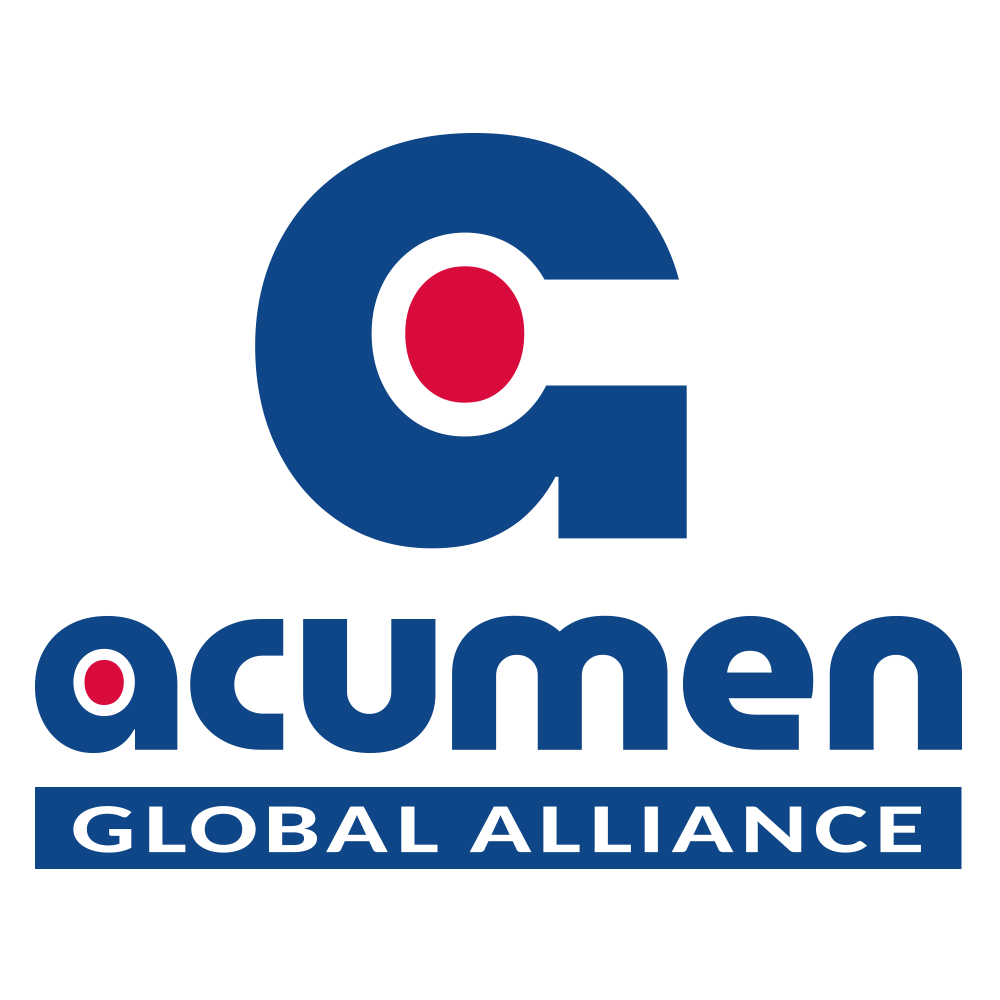Global Workforce Due Diligence: Why People Define Enterprise Value
By Stuart Creasey, Regional Manager at Acumen International
The foundational assumption of classic corporate due diligence was that value could be audited on a balance sheet: plant, property, equipment, and cash. Today, for technology, professional services, and high-growth companies, that equation is obsolete. Enterprise value has migrated from hard assets to human capital.
A company’s worth is now fundamentally tied to its team and the “soft assets” they generate: intellectual property in the form of software, designs, client data, research, and know-how. What makes these assets different from property or equipment is that they are inseparable from people.
These assets hold value only if the company can prove a clean chain of title — via invention-assignment and confidentiality agreements, jurisdiction-compliant IP assignments, and enforceable employment contracts. Without that, what looks like enterprise value may, in reality, walk out the door with the individuals who created it.
This makes employment and IP diligence central to any major transaction, not only acquisitions, mergers, IPOs, or capital raises, but also joint ventures, carve-outs, supply-chain contracts, and financing where workforce integrity is a condition of trust.
Financial statements describe past results; global workforce arrangements show whether those results can be owned, repeated, and scaled. If the people, rights, and knowledge aren’t secure, the deal is built on sand.
Scenarios That Trigger Workforce Due Diligence
Due diligence is often imagined as a financial exercise, but in practice it cuts much wider.Workforce and Intellectual Property (IP) verification surface in almost every form of corporate transaction:
- Acquisitions and mergers. Buyers need certainty that the people, knowledge, and IP are tied to the company being acquired and will transfer with it. If not, the continuity of operations and the price paid for “intangible assets” are at risk.
- Capital raises and IPOs. Investors test whether growth is supported by enforceable contracts, clean IP rights, and scalable global workforce arrangements. Fragile contractor setups or contested IP can unravel valuation and delay a market event.
- Joint ventures and alliances. Future development and exploitation – stakeholders require assurance that intellectual property can not only be owned but also lawfully used, transferred, and further developed without restriction or conflicting claims.
- Divestitures and carve-outs. When business units are spun off, the test is whether they can operate independently. That requires their own workforce arrangements, transferrable contracts, and rights that do not rely on the parent company.
- Licensing and technology transfer. Deals depend on the chain of title. Unless employees and contractors have validly assigned their rights, the company may lack the authority to license, sublicense, or transfer what it claims to control.
- Large supply-chain contracts. Enterprise buyers and governments now look beyond financial solvency to test vendor workforce integrity. That includes right-to-work compliance, labour-leasing licences, sanctions checks, and modern slavery safeguards.
- Debt financing. Lenders, particularly multilaterals and development banks, require labour, safety, and compliance checks before releasing capital.
- Large supply-chain contracts. Enterprise buyers and governments now test vendor workforce integrity alongside financial solvency, including sanctions, right-to-work, labour-leasing licences, and modern slavery compliance.
Each of these scenarios asks the same fundamental question: does the business truly own and control the workforce and the value it produces? Where the answer is uncertain, deals are delayed, re-priced, or collapse outright.
The Standard Due Diligence Checklist and Hidden Workforce Dependencies
Lorem ipsum dolor sit amet, consectetur adipiscing elit, sed do eiusmod tempor incididunt ut labore et dolore magna aliqua. For agencies engaged in international search and placement, everyday realities rarely fit into neat boxes. Yet time and again, recruiters see the same issues: clients want reach, speed, compliance, and candidate trust, while local labour law, cost, or infrastructure get in the way. Here’s how partnering with a Global Employer of Record turns these friction points into operational strengths:
Every major corporate transaction begins with a due diligence checklist. Buyers, investors, and lenders work through financial, legal, operational, and risk categories to test whether the business they are backing is sound. On paper, “employment” appears as a single bullet point under Legal or HR. In practice, it runs like a fault line through the entire list.
In a global, knowledge-driven economy, workforce arrangements are not compartmentalised. A single flaw — a misclassified contractor, a weak IP clause, or a non-transferable employment model — can simultaneously create a financial liability, a legal gap, and a business continuity risk.
The issue is not whether the files are neat, but whether hidden workforce fragilities cut across every standard review category.
Where Workforce Issues Disrupt Due Diligence
| Due Diligence Category | Standard Focus | Workforce Dependency (Hidden Risk) |
| Financial Review | EBITDA, cash flow, tax compliance, operating costs. | Misclassification & Hidden Costs: liabilities from misclassified contractors (back taxes, benefits, penalties), unfunded pensions or severance, inaccurate payroll filings. |
| Legal & IP Review | Title ownership, enforceable contracts, regulatory compliance. | IP Gaps & Enforceability: weak IP assignment clauses across jurisdictions, expired visas for key personnel, missed localisation quotas, pending collective labour claims. |
| Operational Review | Process scalability, integration feasibility, system continuity. | Transferability & Structure Risk: reliance on non-transferable vendor contracts, fragmented hiring models, integration costs from inconsistent global policies, continuity risks for key staff. |
| Risk & Compliance | Sanctions, data security, health & safety. | Integrity & Exposure: hidden supply-chain risks (modern slavery, posted worker breaches, invalid labour-leasing licences), data privacy violations in employee records. |
Fragile Team Structures and Continuity Risk
In many transactions, the workforce is not concentrated in a single office or entity. It is scattered across countries and engaged under a patchwork of models: direct employees, contractors, outsourcing vendors, payroll providers, or Employer of Record (EOR) arrangements across locations.
This mosaic may keep operations running day to day, but under due diligence it is tested for one thing — continuity.
The risk is straightforward. If the business depends on short-term contracts, non-transferable vendor agreements, or individuals without enforceable ties to the company, then its most valuable asset can evaporate post-closing. A single resignation, an expired visa, or a contract that cannot be assigned can undermine the very asset base that justified the deal.
Continuity risk shows up in several ways:
- Retention gaps – absence of non-competes, notice periods, or retention incentives for key people.
- Non-transferability – EOR or outsourcing agreements that cannot move cleanly in a share or asset deal.
- Contract fragility – reliance on contractors or vendors whose agreements are short-term or lack enforceable IP assignment.
- Integration cost – a patchwork of models across jurisdictions that must be harmonised at the buyer’s expense.
What looks like a global workforce advantage can, under due diligence, reveal itself as a fragile foundation. When the people and their knowledge are the core asset, continuity risk is valuation risk.
Frequently Overlooked Workforce Risks in Due Diligence
Some workforce risks are well known — misclassification, payroll gaps, or weak IP clauses. Others surface late in diligence, often once deal terms are already being negotiated, and can be just as damaging:
- Equity and incentive schemes – Cross-border stock options, RSUs, or phantom shares are complex. If vesting schedules or tax treatments are undocumented or misaligned, buyers face liabilities and the incentives themselves lose value as retention tools.
- Change-of-control clauses – Common in senior contracts, these clauses can trigger accelerated vesting or severance payments on closing. In some cases, they give key staff a pre-agreed exit route, creating a transactional tripwire for the buyer.
- TUPE and collective labour protections – In the UK and EU, employee rights transfer automatically on a business sale. These rules require consultation with staff representatives and can block or delay post-deal restructuring. Similar laws exist in Brazil and other markets.
- Pensions and long-tail benefits – Defined-benefit obligations, statutory severance, or long-accrued bonuses and leave often sit off-balance sheet. Once identified, they can materially alter deal economics.
- Vendor transferability – Employment under an EOR is lawful and binding, but in transactions the underlying commercial agreement may not transfer automatically. Counterparties need to confirm whether agreements can be assigned or if new ones must be signed. If overlooked, continuity of payroll and employment relationships can be disrupted.
Supply-Chain and Workforce Integrity Checks
Due diligence today doesn’t stop with the company itself. Counterparties, whether buyers, lenders, regulators, or major clients — increasingly want to know who else is in the room: the subcontractors, the payroll providers, the offshore teams.
In sectors like defence, energy, and technology, a single weak link in the chain can stall financing, derail a licence application, or block a long-term contract.
The pressure points are predictable:
- Labour standards – assurance there is no exposure to forced, underage, or undocumented labour.
- Cross-border rules – posted-worker notifications in Europe, labour leasing licences in Germany or Slovakia, visa quotas in the Gulf.
- Sanctions exposure – payroll routed through restricted jurisdictions, or staff engaged in controlled technology sectors.
- Health and safety – evidence that not just employees, but also contractors and agency staff, are properly insured and trained.
What looks like a vendor risk on paper often becomes a substantial risk in practice. A weak subcontractor or payroll chain can turn a routine compliance check into a barrier for funding or partnership.

The Human Side of Due Diligence
Organisations don’t fully recognise, or acknowledge, that their greatest asset is their people, the talent, expertise, knowledge, and experience they bring.
At the same time, this is also their greatest area of risk, not only from a compliance and legislative perspective, but also in terms of talent retention, succession planning, and intellectual property.
Balance sheets show history. Teams define the future.
Stuart Creasey,
Regional Manager
Preparing for Due Diligence: The Value of Proactive Control
By the time diligence begins, the timetable is rarely generous. Investors, banks, or strategic partners want clarity in weeks, not months. Companies that have not structured their workforce compliantly from the outset — across contracts, roles, and jurisdictions — usually end up scrambling, patching gaps under pressure, or renegotiating terms with key staff. The result is delay, valuation pressure, or in some cases, a broken process.
The contrast is clear when a company designs its workforce as part of strategy rather than leaving it to patchwork. It drafts employment terms with cross-border HR compliance in mind. It structures incentive schemes so retention and vesting outcomes can be shown immediately.
Contractor populations are reviewed in advance, with transition options modelled if structures need to change. EOR or payroll arrangements are assessed for continuity under different transaction scenarios. Collective agreements, and TUPE or ARD (Acquired Rights Directive) obligations are mapped and factored into planning.
This kind of preparation changes the dynamic. Management can spend its time on negotiation, rather than chasing gaps. Counterparties see evidence that the company’s people, rights, and compliance are in order. The result is greater efficiency and a transaction built on evidence rather than uncertainty.
Acumen’s Global Workforce Expertise
The central question in modern due diligence isn’t about the numbers on a balance sheet, it’s whether a business can retain the people and knowledge that create its value.
This point, the security of human capital, is where many transactions, financings, or partnerships face their most critical test.
Acumen International gives leadership teams the definitive ability to pass that test. Across 190+ countries, we put your global teams on a legal, compliant, and documented footing, addressing everything from enforceable contracts and IP assignment to precise payroll, tax, and mobility.
Our global hiring solutions help simplify complexity, transforming your dispersed workforce from a potential liability into a fully secured asset.
The result is immediate: when due diligence begins, your leadership can present clear, verifiable proof that the foundation of your future growth is stable, compliant, and ready for investment.
25+
Years of Industry Expertise

